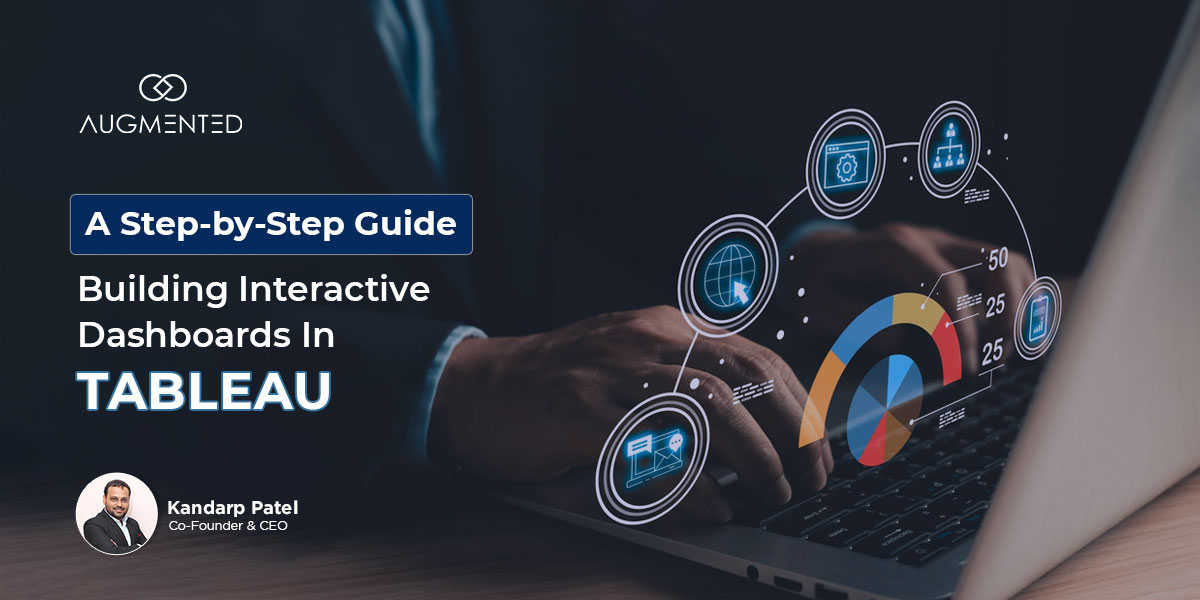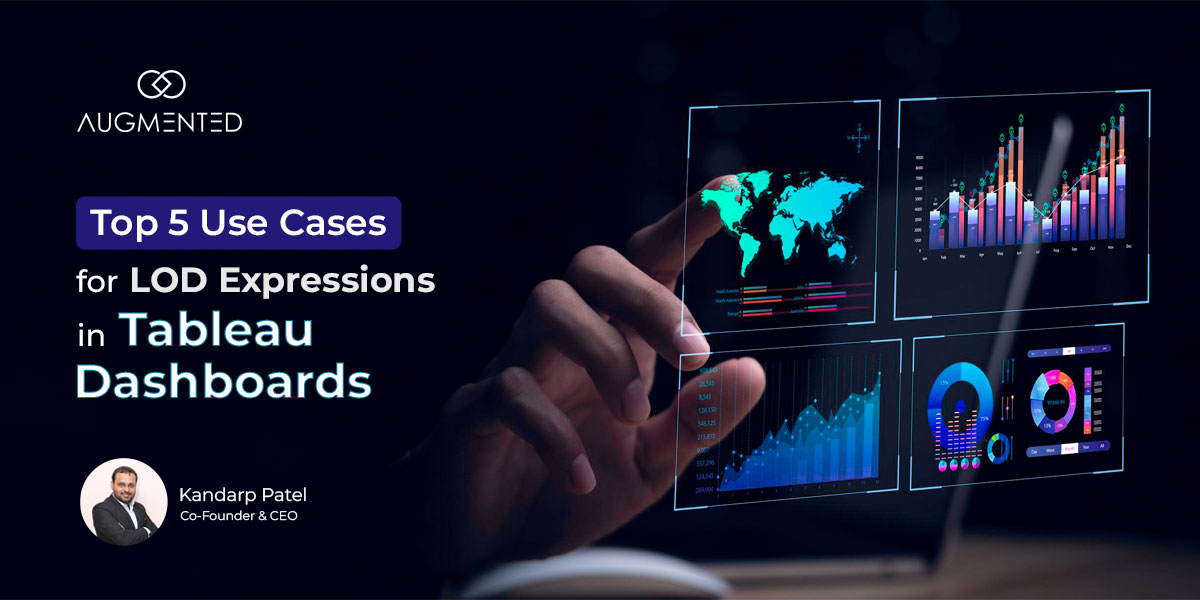Did you know that the business intelligence software market is expected to grow from $29.51 billion in 2025 to $36.35 billion in 2029?
That’s a lot of billions… so why are businesses investing so much in business intelligence?
Personally, I believe it’s because they are finally seeing how much it is going to add value to their final output.
If you ask me, businesses are finally realizing the power of data.
But there is one thing that I’ve seen over and over again. Businesses collect the data but don’t really know how to use it effectively.
Reports pile up.
Insights get buried.
Opportunities are missed.
That’s when I recommend using big data analysis techniques with tools like Power BI. How does it help simplify your data?
That’s exactly what I’m here to share with you.
In this guide, I’ll show you how to use Power BI to make the most of your data.
So, let’s jump right in!
How to Use Power BI: Table of Contents
- How to use Power BI? The Ultimate Guide
- What is Power BI?
- Why Should You Use Power BI?
- Quick Step-by-Step Guide to Using Power BI
- How Marketers Can Use Power BI?
- How Much Does Power BI Cost?
- What are Power BI Best Practices?
- What’s New in Power BI?
- You’re Ready to Use Power BI…
What is Power BI?
Before I discuss how to use Power BI, let’s first briefly examine what it is and why it's important.
Power BI is one of the most powerful business analytics and data visualization tools in the market today. Developed by Microsoft, it allows you to turn your raw data into actionable and meaningful insights.
Consider Power BI as a connectivity tool. Why? It allows you to bring together and connect various unconnected sources of data, such as:
- Data from spreadsheets
- Data from your reports
- Data from online services, etc.
This data from various sources is then analyzed and converted into interactive dashboards with rich reports. It comes in different versions, including:
- Power BI Dashboard: Free, Windows-based app for creating interactive reports and visualizations
- Power BI Pro: Share, collaborate, and publish reports in the cloud with real-time updates and collaboration tools
- Power BI Premium: Scale up with dedicated cloud resources, AI features, and large datasets for enterprise needs
- Power BI Embedded: Embedded interactive reports into your apps without requiring users to have Power BI accounts
- Power BI Report Server: Host and manage Power BI and paginated reports on-premise for greater control
- Power BI Apps: Use pre-packed dashboards and reports tailored to your industry for quick insights
Now that we’ve explored the basics of Power BI, let’s see how it can elevate your business processes and add value to your overall business.
Why Should You Use Power BI?
You can use these beautifully rich reports generated by Power BI to understand what’s working and what’s not across your organization or business.
It helps you track your organization’s key performance indicators (KPIs) by making sense of your messy data. Using these KPIs, you can make better and more informed business decisions.
Other factors that make Power BI a compelling tool to use include:
- It is easy to use
- Supports multiple data sources
- Provides real-time data updates
- Offers AI-powered insights
So, depending on your priorities and requirements, you can harness its power in a lot of different ways:
For instance, your sales team can quickly access sales performance across different regions or projects, and directors can gain comprehensive insights into project statuses and timelines.
Convincing, right? Now, I know you might be wondering, “How do I start?” “What are the steps to take?”
Let’s get started then.
Quick Step-by-Step Guide to Using Power BI
The best part about Microsoft is that it has made Power BI as simple as ABC for everyone to use.
Let’s walk through some of the main steps for you to get started with the Power BI desktop.
How to Download and Install Power BI?
Step 1: Download the Power BI desktop application.
Many users download the desktop version to import datasets and create reports. Once they’ve used the necessary features, they usually switch to the Power BI (cloud-based) service to share them and collaborate on the findings within the organization.
But, if you are a solo worker and need to share data occasionally, you might just need a Power BI desktop.
With that in mind, you get to download the desktop version in the following way:
- Visit the official Power BI desktop page.
- Click on the “Download now” button.
- The Microsoft Store will open on your screen.
- Follow the instructions to install it on your Windows device.
Note: Power BI is free for Windows. However, if you are a Mac user, you will need to sign up for the Cloud-based service.
Step 2: Install Power BI
It might take around 1 GB of space on your desktop, so make sure that your desktop has enough space to accommodate it before installing the Power BI desktop version.
- Open the downloaded file on your computer.
- Follow the instructions or on-screen steps.
- Launch the app, and you’ll see a Power BI welcome screen.
It might look something like this:
Now that you’ve got the app up and running, let’s see how you can connect to your data sources!
How to Connect to a Data Source in Power BI?
If you want to start with Power BI, you will need to import your data from your data sources. It supports various data sources.
So, you can import data from Excel, SQL servers, Google Analytics, existing Power BI datasets and more. You can also import your data from cloud-based services like Azure and Salesforce.
Connect Your Data Source to Power BI in Four Simple Steps:
- Open the Power BI desktop on your device.
- Click on the home ribbon and then “Get Data.”
- Select and pick your data source.
- Browse or select the file or database.
- Click Load or Transform Data to begin cleaning.
- Choose the relevant data file.
Remember to follow the instructions as and when you see them on the screen. Another important point is that you are not restricted to importing only one dataset.
How to Clean and Prepare Data Before Using Power BI?
A lot of data is messy and difficult to handle, which is why you’ve decided to use Power BI. Thus, before you start modeling your data and creating reports, it is essential to clean and prepare your data using Power Query.
Here’s how you can tidy up your data with Power BI:
- Click on the “Transform Data” button.
- A Power Query editor is open on your screen.
Now, let’s assume you select and connect an Excel file. Using the editor, you can perform various actions to remove duplicates, replace missing values, filter rows or columns and more.
Once this is done, use the “Applied Steps” pane to track changes that you made to your file. Finally, if you are sure that your data is clean, click “Close and Apply” to save your changes and return to the Power BI dashboard.
How to Create Data Models and Relationships?
Do you want a report showcasing conversion rates? Do you want to track KPIs such as revenue and profit margins?
Whatever you need, as long as you have the right data, Power BI makes it visually usable.
Creating a relationship between your data sources is important to create a visual report. In Power BI, this relationship is done by modeling your data.
The core reason to model your data is to decide what type of report you wish to create with your data.
How do you create this relationship?
- Go to “Model View.”
- Drag and drop the field to establish the relationship. (In this case, let's assume the tables on your Excel file.)
- Join the data tables using the Primary Key-Foreign Key relationship.
You can also optimize the models using DAX if you want advanced calculations.
How to Visualize Data in Power BI?
Now that your data is ready, it’s time for you to create charts and graphs. Out of many available data visualization tools, choose the one that best suits your requirements.
Here’s How You Can Create a Visualization Report:
- Go to the “Report View.” (You’ll find it in the left-hand navigation panel)
- Drag and drop your file onto the canvas.
- Select the type of visualization you want for your data. (Bars, charts, graphs, etc.)
- Use the visualization pane to customize appearance, filters, and interactivity.
You can customize your visuals by applying filters, themes and slicers. Finally, arrange your visualizations to create a report. During this entire process, you can change the type of visualization if you are not comfortable with the previous one.
Quick Tip: Experiment with different visualizations before finalizing your report. It is important that your visualizations convey a compelling story and information about your data.
How to Create a Power BI Dashboard?
It’s important for your team members to view and interact with the reports you created. Therefore, publishing your report and creating a dashboard is important for your organization. Power BI dashboard creation also helps you and your team to access these reports from any location.
Here’s How You Can Create a Dashboard:
- Log in to the Power BI service.
- Go to the workspace to continue your report.
- Open the report that you want to create a dashboard.
- Pin the visuals to the dashboard.
- Customize and arrange the tiles for your dashboard.
You can pin the visuals to the dashboard by hovering over the visualization in your report. Click the “Pin” icon that appears. You can choose to pin to an existing dashboard or create a new one.
Repeat this process with every visualization. Moreover, you can also pin one complete report on a single dashboard with all the visualizations on the same tile.
How to Share Reports and Stats on Power BI?
Ready to share and export your reports and stats? Great. Here’s how you can share it.
- Go to your workspace.
- Select the desired report you want to share.
- Click on the “Share” button. (often in the top right corner)
- Enter the email address of your team member(s).
- Set/Give permissions like “Can edit” or “Can View.”
- Click “Send.”
Once you have shared the report, your team members can access and interact with it based on the permissions you give them.
Furthermore, you also have the option to export your work. One of many ways is to export your report as a PDF. By clicking on the export button available in the side menu bar of the Power BI desktop, you can create a PDF.
All you need to do is to take the following steps:
Select File -> Click on Export -> Select Export as PDF
Your file loads into your regular PDF viewer, which you can share easily with your team or stakeholders.
So, that’s how Power BI works. Isn’t that easy? I hope this has helped you gain the confidence to use Power BI for clear and insightful visualization!
Now that you know what is Power BI and how you can use it, let’s quickly review a few important factors, such as how much it costs, what Power BI best practices you should follow, and some latest feature updates.
How Can Marketers Use Power BI?
You can use the interface to improve different aspects of your organization in many ways. However, this is a quick example to help you understand how you can improve your marketing using Power BI.
Imagine running a multi-ad campaign on Google Ads and your social media platforms. What would you usually do to know which ad performs the best for you to optimize your budget and make other decisions?
You would probably manually navigate through several spreadsheets, wasting your time on repetitive, boring tasks that might not even lead to conclusions or decision-making insights.
But with Power BI’s many data visualization tools, you can analyze and visualize your data within minutes. Isn’t that amazing? Yes, it is!
How Much Does Power BI Cost?
Before opening your Power BI account, it’s important to decide which plan you want. Ask yourself questions like:
- Do you want to work with basic modeling and visualization without any sharing?
- Are you looking to collaborate and share with your team members and other stakeholders?
- Do you need advanced AI capabilities for large data volumes?
Once you have clarity on these questions, you can either sign up for a free plan, a pro or premium version, or a paid monthly subscription. To find out more about the pricing tiers, you can check out their pricing page.
4 Power BI Best Practices You Should Always Follow…
Only understanding “What is Power BI” isn’t always enough to get the best results. Therefore, we’ve listed a few learnings in the form of best practices that will help you improve your performance and success with the tool.
Some of the many Power BI best practices are as follows:
- Properly clean and optimize your data before importing.
- Use efficient DAX formulas to enhance the performance.
- Implement data security and governance, such as role-based access control.
- Automate data updates to keep your reports up to date.
Finally, regularly explore new features and updates from Microsoft.
What’s New in Power BI?
Power BI introduced a few enhancements to its features in February 2025. And we’ve some important ones listed here for your reference.
- Improved Modeling
Power BI has improved its modeling capabilities with live editing of semantic models in Direct Lake mode.
- Interactive Explore Feature
You can now filter, sort, and swap fields and visuals easily for ad hoc exploration in both the read and edit modes of a report.
- OneLake Catalog
OneLake Catalog is now available on Power BI within Microsoft Teams.
Using these updates, you can now work smarter and collaborate more easily.
You’re Ready to Use Power BI…
Congratulations! Data visualization just got a whole lot easier for you with Power BI.
We’ve explored everything from installing to creating dashboards with key components of data visualization and sharing them within your organization.
What’s more is that Power BI offers a free trial and flexible plans to suit your budget!
All that said, mastering Power BI takes some time and expertise. Plus, it’s not the only tool that’s available out there! So before you commit to one, I recommend you explore all your options.
And, if you need help exploring options or getting started with Power BI, you can talk to our data visualization experts.
Meanwhile, happy exploring!
How to Use Power BI: FAQs
1. Can I learn Power BI by myself?
Yes. Power BI is generally easy to learn. You can get started with Power BI as a beginner. You can also use online resources, such as this guide and other tutorials or videos.
2. How long does it take to learn Power BI?
It depends on your prior experience and how much effort you put into learning it. However, it usually takes four to six weeks to learn the basics of Power BI. If you are keen on mastering its advanced features, it may take a few months. But again, it completely depends on you.
3. Is Tableau better than Power BI?
Power BI and Tableau are both powerful data visualizations (Business Intelligence) tools. Both tools have their own strengths and weaknesses, but they do overlap regarding their capabilities. The best choice depends on your needs, budget and other similar factors.
4. What is the full form of Power BI?
Power BI stands for Power Business Intelligence. It is a business intelligence tool that helps you convert your raw data into meaningful insights using data visualization tools. It helps you analyze their data, create reports, and share insights.
5. Which language is used in Power BI?
Power BI uses two coding languages: Data Analysis Expressions (DAX) and Power Query M. These languages are used for calculations, transformations and data modeling.




